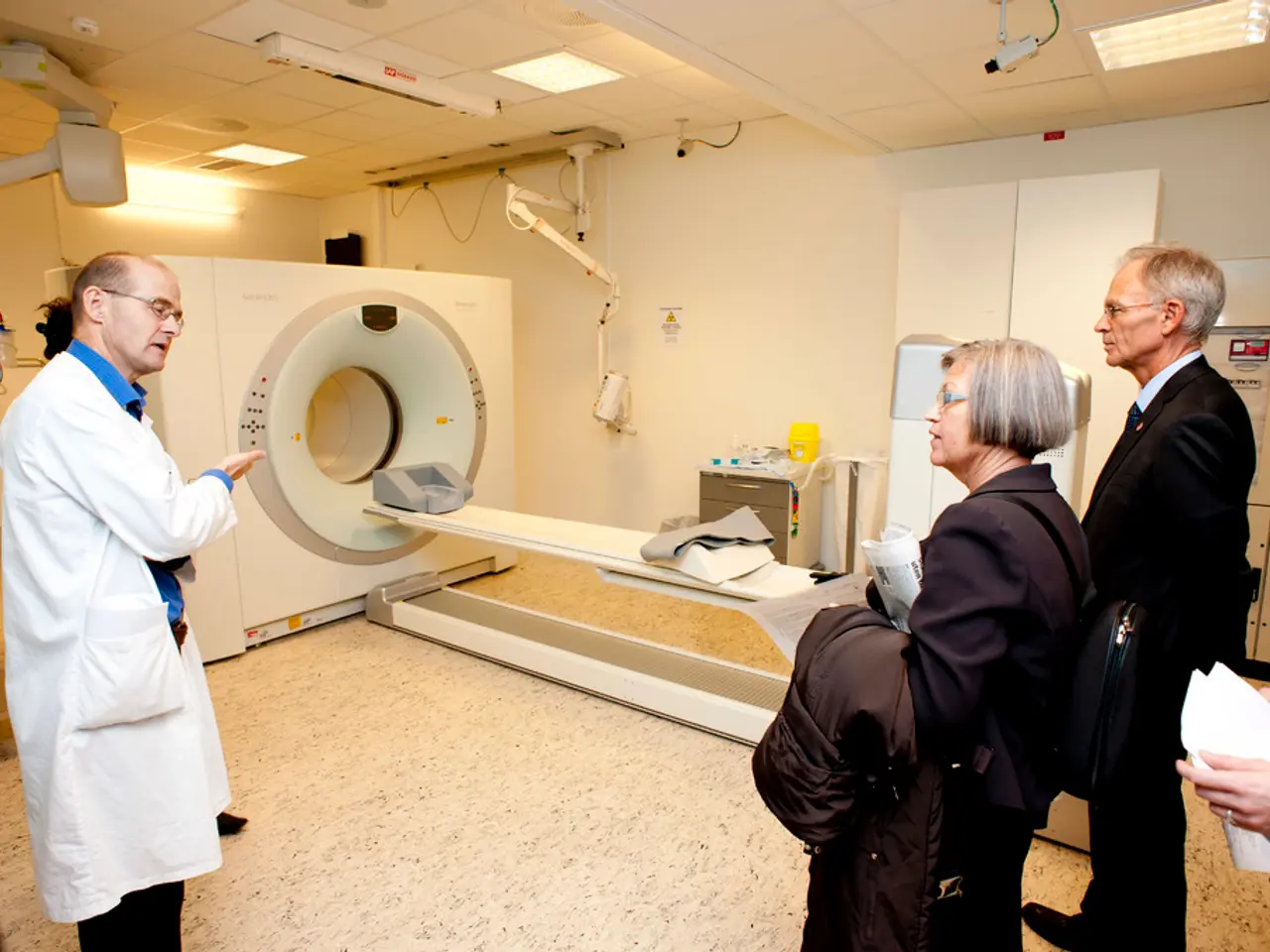Ultrasound Scan Using Doppler Technology: Procedures, Preparations, and Outcomes
Doppler ultrasound, a painless, non-invasive, and risk-free procedure, has become a valuable diagnostic tool in the medical field. This innovative technology uses sound waves to create images of blood flow, providing doctors with essential insights into various vascular and circulatory conditions.
One of the primary uses of Doppler ultrasound is in diagnosing Peripheral Artery Disease (PAD), a condition characterised by narrowed arteries that reduce blood flow to the limbs, often due to atherosclerosis. The arterial Doppler scan is instrumental in detecting PAD.
Atherosclerosis, the buildup of plaque inside artery walls, leading to the "hardening" of arteries, is another condition diagnosed using Doppler ultrasound. It can also detect blood clots within arteries or emboli that have travelled from other parts of the body, causing blockages. Furthermore, it helps identify weak, bulging spots in artery walls that risk rupture, known as aneurysms.
In addition to these, Doppler ultrasound is used to diagnose congenital heart defects in newborns and children, conditions affecting the heart's structure and function. It also aids in diagnosing blockages or weakened vessels in the brain that could lead to stroke or Cerebrovascular Accidents (CVA).
Doppler ultrasound is also beneficial in evaluating venous issues, such as blood clots or varicose veins, by assessing blood flow in veins. While not as commonly associated, it can assist in assessing cardiac function and may indirectly help diagnose arrhythmias by evaluating overall heart function.
The procedure typically lasts about 30-45 minutes, and a person can usually leave immediately afterward. There are several types of Doppler ultrasound, including color Doppler, power Doppler, duplex Doppler, spectral Doppler, and continuous-wave Doppler.
Certain factors such as obesity, an irregular heartbeat, cardiovascular diseases, and smoking before the ultrasound can skew the findings. If a technician finds an irregularity, it could indicate a blood clot, a buildup of cholesterol, narrowing of a blood vessel, a coronary artery spasm, or other issues.
If a person shows signs or symptoms of certain conditions, such as PAD or a heart condition, a doctor may order a Doppler ultrasound. Symptoms of PAD can include coldness in the feet or lower parts of the legs, weakness or numbness in the leg, painful cramping in the leg muscles or hips, changes in the colour of the skin, or shiny skin on the legs. Similarly, a doctor may order a Doppler ultrasound if a person has symptoms of a heart condition, such as fatigue, shortness of breath, or swelling in the feet, legs, or abdomen.
However, it's important to note that the technician will not discuss the results with the person, but will send them to the doctor, who will answer any questions and discuss the next steps if an irregularity is found. The handheld device emits sound waves that bounce off moving objects, such as blood cells, providing the doctor with crucial information about the health of the veins and arteries.
In conclusion, Doppler ultrasound is a safe, non-invasive method for diagnosing a wide range of vascular and circulatory conditions without radiation exposure. Its versatility and accuracy make it an indispensable tool in modern medicine.
- Peripheral Artery Disease (PAD) can be diagnosed through the arterial Doppler scan, a valuable diagnostic tool that utilizes Doppler ultrasound technology.
- Atherosclerosis, leading to the hardening of arteries, can be diagnosed using Doppler ultrasound, which can also detect blood clots and aneurysms.
- In addition to vascular conditions, Doppler ultrasound is used to diagnose congenital heart defects in children and evaluate cardiac function, potentially identifying arrhythmias.
- Doppler ultrasound is beneficial in diagnosing venous issues such as blood clots or varicose veins, and can assess blood flow in veins for cardiovascular health.
- The accuracy and versatility of Doppler ultrasound makes it an indispensable tool in the field of medical-conditions related to health-and-wellness, including cardiovascular health.
- Certain factors like obesity, an irregular heartbeat, cardiovascular diseases, and smoking can skew the Doppler ultrasound results, potentially indicating issues such as a blood clot or a buildup of cholesterol.
- If a person shows signs or symptoms of specific medical-conditions like PAD, a heart condition, or other vascular issues, the doctor may order a Doppler ultrasound for testing and screening purposes to aid in their diagnosis and treatment plan.




